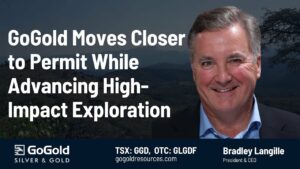
Mexico’s economy has been on a rollercoaster ride over the past year. It saw budding progress from the reforms of the previous three years emerge early on, only to be bashed and beaten from all sides by the bearish sentiment around EMs stemming from the rise of Donald Trump. In recent months, however, economists have observed, with much relief, that the economy is beginning to recover and its currency stabilise, as many of the initial threats now look unlikely to manifest.
It has by no means been the year of buoyant growth that some expected, and the investment bonanza that was anticipated to follow years of profound reforms, instead, presented itself as a modest flow of targeted and carefully timed capital injections. But after several years of steady progress, the challenges encountered this year – some internal, others largely external – offer lessons and opportunities for an economy pushing to rid itself of the “emerging” label.
To complement sectoral reforms, this Summer saw Mexico finally take an important step in developing its capital markets by opening the new Central de Corretajes (Cencor) stock-exchange, which, the government hopes, will boost the number of companies listed in Latin America’s second-biggest economy by nearly 40% in three years.
In 2012 the PRI party came to power on promise of reform and, while the newly elected president Enrique Peña Nieto was facing a host of challenges – not least of which widespread protests by opposition supporters across the country – he stuck to his guns and pushed ahead with the legislative agenda. The energy and oil & gas reforms were “signature” policies from the start, and are now proving to be the biggest driver for foreign investment in Mexico in a long time.
The challenges, both external and internal, facing the reform package launched in 2013 should not be underestimated. While sitting on a “goldmine” of an estimated 100 billion barrels of undiscovered oil, PEMEX, the long-established state monopoly, had only been able to explore around 20% of the country’s resource potential. Production output had been declining steadily for years; in 2017 it was just 40% of its 2004 peak. That decline was aggravated by a global downturn in 2014, with oil prices plunging – making it even harder for Mexico to keep production levels high, let alone ramp them up.
Many believed that opening up the oil sector was a near-impossible task because it required a fundamental shift in business mentality, and much of the Mexican public is still questioning the move. But passing the legislation in 2013 was the first major step towards that goal, and in the last two years, the strategy is finally bearing fruit. More than 40 upstream contracts have been signed in just four years, attracting USD35bn in associated investments from a December 2016 deepwater auction, according to figures quoted by the Financial Times.
“The hydrocarbon sector reform is more of a long-term horizon,” said Jose Perez, Senior Director, Head of Analytics & Research, Latin America, S&P Global Ratings. “But so far, the auctions and the tenders have gone very well, especially the recent ones, with a number of new wells discovered in the Gulf of Mexico, which provided additional oxygen for these auctions going forward. But by their nature, these reforms will provide true economic value in the long run; it won’t materialise for another two to three years.”
Opening the Gulf
Investors are already flocking to the sector, following the massive oil discoveries in the Gulf of Mexico, thanks to leadership and participation from international oil giants like Talos Energy, Premier Oil, BP, Eni and others. Under the Energy Ministry’s five-year plan, it intends to auction a further 500 exploration blocks. BP, in particular, is already involved in three offshore projects, two in the Gulf of Mexico’s deep waters and another in shallow waters, and recently won open season rights to surplus capacity on some natural gas pipelines owned by Pemex.
“I see a future of us co-investing with Pemex on major projects,” said Chris Sladen, country manager for Mexico at BP, in an interview with Reuters, noting that initial company investment in all three projects could total many hundreds of millions of dollars and more could follow if the ventures are successful.
BP also launched Mexico’s first foreign-branded gas station, with plans to open some 1,500 stations over five years. Sladen said that by the end of this year BP could open 200 gas stations, paving the way for other large international corporations to enter this market.
Of the projected 112 billion barrels of oil still buried beneath Mexico, about 22% of projects were allocated to Pemex in the early auctions, but only 5% of the rest has been auctioned so far, leaving a huge investment and exploration potential, according to Juan Carlos Zepeda, the President of the recently established National Hydrocarbon Commission (CNH), tasked with regulating the sector. While it is riding high on the wave of recent auctions, the process is still in its nascent stages.
“On the energy side, we have some major oil pipes in the north of the country; they were in place before the reforms – and now that activity is becoming more important,” said Jose Perez.
“They opened up the sector to a range of different producers; in oil and gas they’ve been auctioning off new fields, similar to the ones on the US border side, but so far haven’t been tapped due to lack of technology,” commented John Peta, Head of Emerging Market Debt at Old Mutual Global Investors. “They still need to do a fair amount of work – for example there are not a lot of storage facilities in Mexico. They still rely on third parties in terms of technologies to build the tap and continue exploration, but it’s a move in the right direction.”
Liberalisation of the oil and gas sector as part of broader energy market reforms has also lubricated fundraising in related industries: in the downstream operations, energy-related infrastructure, electricity and power sectors. The dismantling and reorganization of the Comisión Federal de Electricidad (CFE), the federal electricity monopoly – much like Pemex, the creation of a new independent grid operator Cenace, and increasing competitiveness by cultivating private generation are among some of the key developments in this space.
Growing investment in the electricity sector will be essential to meet the demand which for many years grew slower than in neighbouring economies, about 25% since 2000, but is expected to surge in the coming decades, with the International Energy Agency (IEA) forecasting an 85% rise by 2040. According to a IEA report, a growing share of that demand will be met through sustainable resources, which are high on the government’s long-term agenda.
“Mexico’s innovative auction system provides a substantial boost to Mexico’s clean energy efforts in the power sector,” the report stated. “More than half of the country’s new power generation capacity installed between now and 2040 is renewables-based, tapping Mexico’s large wind and solar resources. New investment in electricity is essential to meet rapid growth in electricity demand, and allows Mexico to reach its target of producing 35% of electricity from clean sources by 2024.”
Mine the Gap
Despite their prominence, the energy and hydrocarbons sectors are by no means the only ones ripe for new investment. The mining industry has continued to prosper ever since it was liberalised and opened to international investors in the 1990s. Its progress over the past 25 years provides many lessons to the newly opened segments of the economy, a template for development and examples of pitfalls to avoid.
One of the major issues concerning mining industry participants and potential investors is the new tax regime, launched in 2014, that introduced a “Special Mining Duty of 7.5% and Extraordinary Mining” duty of 0.5% of profits on certain commodities, which many in the industry see as excessive and essentially constitutes double taxation, which has caused some legal complications.
Another aspect that energy and oil & gas sector players need to take heed from is the way deeper penetration of an industry into peripheral, remote locations and communities can cause frictions with local populations, and with environmentalists. In the 1990s and 2000s Mexico saw widespread protests by residents in areas where extraction was carried out, which reflects a need to work closer with local leaders and embrace better community management practices.
Still, the mining sector has continued to flourish despite those challenges, with Mexico ranked fourth in the world for exploration expenditures, fifth-highest in the Behre Dolbear rating of most investor-friendly mining countries and, for centuries, world’s top silver producer. The country’s mining industry has seen over USD1bn in new investment from Canada alone, according to Secretary of Economy Ildefonso Guajardo, and the sector gathered 7% of total FDI in the country in 2Q2017, according to Statista agency.
Manufacturing and Telecoms
While natural resources form a major part of Mexico’s economy and investment agenda, the ongoing economic diversification is giving a chance for other industries to take root and expand. Manufacturing has attracted nearly half of all FDI into the country over the last quarter, but remains at risk from potential protectionist policies from the Trump administration, especially if the NAFTA negotiations reach a dead-end.
“The renegotiation of the North American Free Trade Agreement (NAFTA) and the future of the U.S.-Mexico relations is holding back gross fixed investment in Mexico, particularly with respect to the expansion of trade-related activities in the manufacturing industry,” a recent report by the World Bank stated.
These threats are yet to materialise, experts agree, and the impact so far has been minimal, with incremental improvements in the PMI index year-on-year, although July’s growth was somewhat slower – manufacturing activity (PMI) fell to 51.2 in July 2017 from 52.3 in June 2017, according to a IHS Markit report. The slower rise in new orders and output were main reasons for the manufacturing PMI’s slower rise.
“It has all been pure rhetoric so far – that was Trump’s thing on the campaign, and like with a lot of things he said, there has been little follow-through. The goals that these countries spelled out in NAFTA negotiations are not as dramatic as initially feared,” Peta pointed out.
According to the investment manager, one of the sticking points is the rules of origins: at the moment exports to another NAFTA economy have to be to be 65% produced in those 3 countries.
“The US is concerned that Chinese parts are ending up in Mexico-produced manufacturing. So, if the US were to raise that to 85-90%, it could have implications for Mexico’s trade deficit and the supply chain,” he explained.
The telecommunications sector is also one that carries similar complexities, namely a geographically dispersed supply chain with a heavy propensity to technology-driven growth; it is also expanding rapidly. According to Perez, the benefits of liberalization are already apparent. Despite inflation growth by 9.1% in Mexico between June 2013, the year the telecommunications reform was passed, and December 2015, prices fell by 23.2%, yielding a differential of 32% between telecoms prices and those of other products in average.
According to statistics by the Federal Institute of Telecommunications, private investment in telecoms grew by 34.8% in 2015 compared to 2014, while telecommunications GDP increased by 11%; the share of FDI in overall telecoms investment increased from below 1% in 2013 to 10% in 2015. Foreign direct investment in Mexico's telecom and broadcasting industry totalled USD238mn in the 1Q2017, up from USD77mn year-on-year.
“Competition is more aggressive now, costs are coming down, and over the past year it helped inflation. That was less evident this year, but that is mostly due to deflated commodity prices. Lower costs might not be good for the large monopolies, but that is how the free market works. Players like AT&T have been very aggressive in competing with the local participants,” Perez commented.
Real Estate
A recently-introduced financial instrument for the infrastructure energy industry, FIBRA E, now allows for investment into operational assets, and offers passthrough tax incentives. It has gained popularity among international players because it allows global PE firms to partner with or acquire domestic companies. In the past couple of years alone, Blackrock entered the market by acquiring Infraestructura Institucional; CDPQ formed a partnership with a consortium of Mexican institutional investors and domestic pension funds; Goldman Sachs also has teamed up with local consulting firm, Ainda.
Another beneficial change occurred in 2013, with the National Commission for the Pension System, CONSAR, amending a series of provisions to their laws to allow investment by pension fund administrators, AFORES, in structured instruments such as those issued by FIBRAs.
“Regarding FIBRAs, I think what matters most is how this new capital is being deployed. Rather than going into the shadow economy it is formalized via these instruments, and allows us to keep a lot of liquidity in the market,” Domingo Valdes, CFO of real-estate developer Vinte, noted in an interview with Bonds & Loans. “At the same time, deposits are held by the AFORES, so there is more balance and transparency in how money circulates in the economy”.
He highlighted that much of it was down to the recent reforms: for example, in the energy sector, all of the capital previously deployed had been done so through direct payments, but now it is done via intermediaries, which makes it more efficient and competitive, and also creates more jobs.
“With FIBRAs, we see the informal owner of an asset replaced with professional managers, which means more assets can be put on the market, and, thus, more investment can enter the sector.”
Regulatory Incentives, New Participants Aid Market Recovery
The positive trends in Mexico’s investment environment have been somewhat overshadowed as of late by the negative sentiment raised by the Trump factor, observers admit, but the subsequent rapid recovery of Mexican assets and the resilience of the country’s debt markets to external shocks is an encouraging story.
“Mexican assets have recovered quite a bit following the Trump scare – the peso has been one of the best performing currencies globally. The Central Bank has been hiking rates to keep up with the US, but now it appears that this cycle is coming to a close. Mexican interest rates are attractive and yield more than a year ago, so there is a nice risk premium here,” noted Peta.
In March this year, the sovereign issued a new benchmark 10-year bond as part of a debt refinancing operation aiming to reduce public debt levels to 50.2% of GDP from 50.5% last year. The USD3.15bn issue was yielding 4.19% and with a 4.15% coupon, and at the time of issuance was 3.2 times oversubscribed, with 380 international investors taking part.
The issuance set the trend for corporates to follow suit, and underscored increasing confidence in the country’s assets. While few corporates issued new debt, many pushed ahead with refinancing, seizing a window of opportunity in the run up to the upcoming presidential election, further US interest rate hikes, and potential NAFTA headwinds.
Sales of the notes have climbed every month since bottoming out in January, according to Bloomberg, with quasi-corporates like Pemex leading the way. June’s final days set a weekly record for bond sales, while the entire month registered an 18% increase from the same period last year. Overall, Mexican companies issued MXN209bn (USD11.7bn) of local bonds this year.
“In Mexico, you have a market with relatively solid fundamentals, and some large corporates refinancing their debt,” explained Perez. “They offer adequate maturities with fine pricing. In 2017 maturities are looking extremely manageable, but next year they will rise, although I expect corporates to continue refinancing. I don’t think there is much appetite to invest in new bonds at the moment, which is not ideal, but we have to accept that.”
The local capital markets received another major boost from the government in late August, with president Peña Nieto formally awarding an operating concession to a new stock market, dubbed BIVA, which, the regulators hope, will soak up 50% of the volume and issuers via an aggressive blend of Nasdaq technology and a streamlined listing process.
By targeting smaller entities and issuers, BIVA would, at least in theory, provide additional and much needed depth to the local markets, making them more sophisticated and diverse.
This, and other developments in Mexico’s investment sphere, won’t remove the risks associated with some of the headwinds on the horizon, including the Fed’s rate hiking plans, tough talks over NAFTA, a presidential election, continued deflation in commodity prices, and geopolitical risk. But they reaffirm the growing strength of this relatively young economy and further fortify the fundamentals that already make it an appealing destination for investors.
ABOUT THE AUTHOR

Bonds & Loans is a trusted provider of news, analysis, and commentary that helps illuminate the most significant issues, events and trends impacting the global emerging credit markets.
Original Article: http://www.bondsloans.com/news/article/1620/mexico-navigates-external-challenges-in-race

















